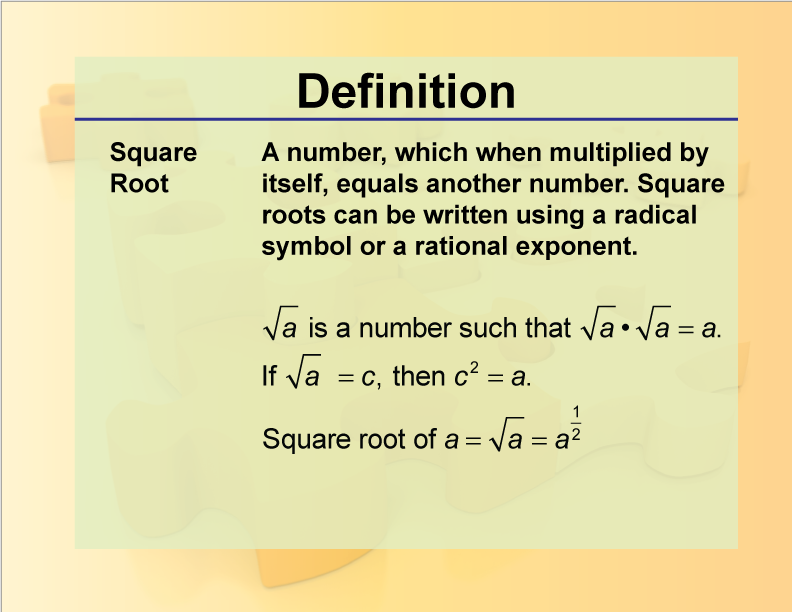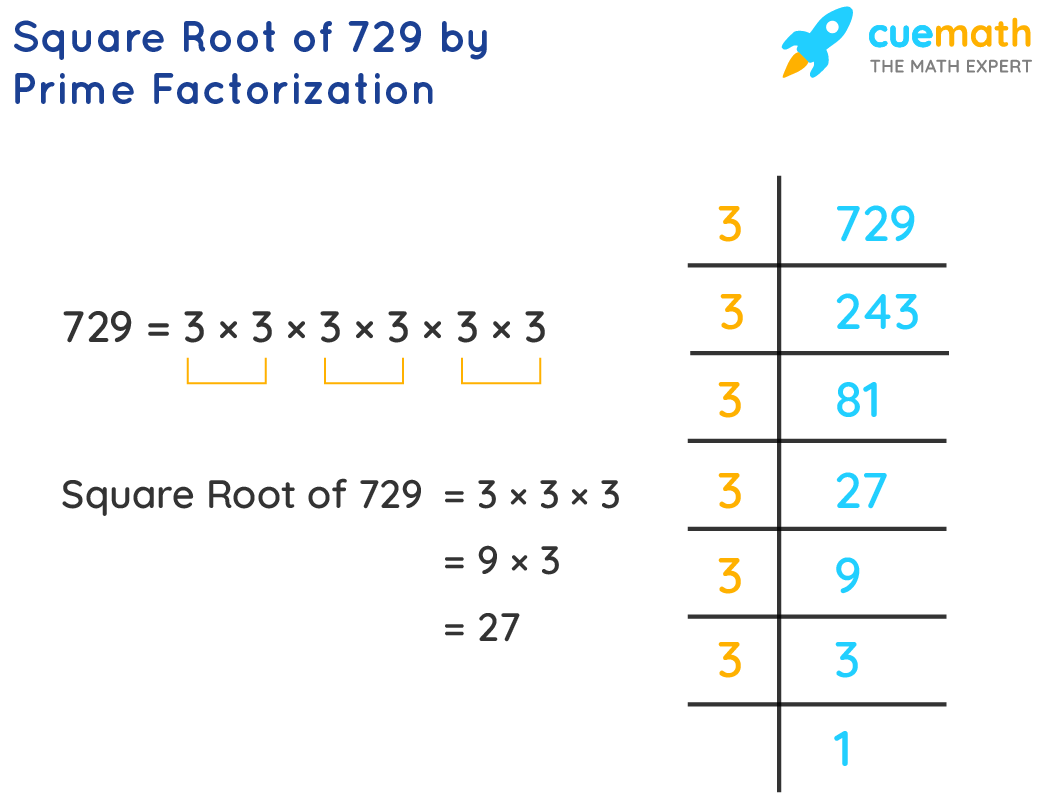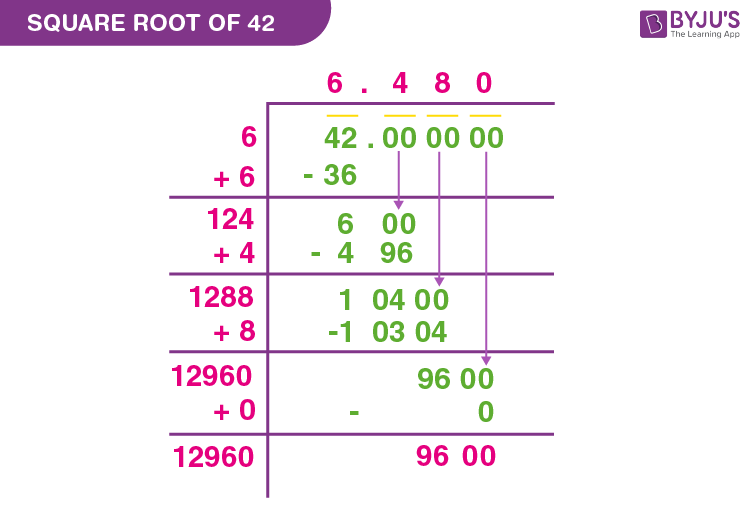Topic square root explained: Discovering the fundamentals of square roots is essential for grasping their significance in mathematics and beyond. This article elucidates how square roots work, their practical applications, and why they matter in everyday calculations and advanced fields.
Table of Content
- Understanding the Square Root
- Introduction to Square Roots
- Definition and Basic Concepts
- Calculating Square Roots
- Properties of Square Roots
- Square Roots in Mathematics and Real Life
- Applications of Square Roots
- Challenges and Complexities in Square Root Calculation
- Advanced Topics in Square Roots
- YOUTUBE: Video giải thích khái niệm căn bậc hai và cách tính toán, phù hợp cho học sinh và người học toán muốn hiểu sâu hơn về căn bậc hai.
Understanding the Square Root
The square root of a number is a value that, when multiplied by itself, gives the original number. The square root is represented by the radical symbol √.
Mathematical Definition
If x is a positive real number, the square root of x is the positive real number y such that:
\( y^2 = x \)
Principal Square Root
Though a number technically has two square roots (one positive and one negative), the principal square root refers to the non-negative root. For example:
\( \sqrt{25} = 5 \)
But it is also true that:
\( -5 \times -5 = 25 \)
Examples of Perfect Squares
Perfect squares are numbers whose square roots are integers. Here are some common perfect squares:
| Number | Square Root |
|---|---|
| 1 | 1 |
| 4 | 2 |
| 9 | 3 |
| 16 | 4 |
| 25 | 5 |
| 36 | 6 |
| 49 | 7 |
| 64 | 8 |
| 81 | 9 |
| 100 | 10 |
Calculating Non-Perfect Squares
Finding the square root of numbers that are not perfect squares is more challenging and often requires approximation methods or a calculator. For example, the square root of 10 is approximately 3.162.
Square Root Properties
- The square root of a product: \( \sqrt{ab} = \sqrt{a} \cdot \sqrt{b} \)
- The square root of a quotient: \( \sqrt{\frac{a}{b}} = \frac{\sqrt{a}}{\sqrt{b}} \)
- Square roots and exponents: \( \sqrt{x^2} = |x| \) (absolute value of x)
Methods to Find Square Roots
Prime Factorization
To find the square root using prime factorization, factor the number into its prime factors, then pair the factors and take one from each pair.
Example: \( \sqrt{1764} = \sqrt{2 \times 2 \times 3 \times 3 \times 7 \times 7} = 2 \times 3 \times 7 = 42 \)
Long Division Method
This method involves grouping the digits in pairs and finding each digit of the square root iteratively. It's useful for manual calculations of larger numbers.
Conclusion
Understanding square roots is fundamental in mathematics, aiding in solving equations and understanding number properties. Whether using factorization, long division, or a calculator, the concept remains consistent and crucial.

READ MORE:
Introduction to Square Roots
A square root of a number is a value that, when multiplied by itself, gives the original number. It is denoted by the symbol √. Understanding square roots is fundamental in mathematics, providing a way to find sides of squares and solve quadratic equations. Here's a breakdown:
- Definition: The square root of a number \( a \), denoted as \( \sqrt{a} \), is a value \( b \) such that \( b \times b = a \).
- Basic Concept: For example, \( \sqrt{9} = 3 \) because \( 3 \times 3 = 9 \).
- Properties: Square roots obey properties like \( \sqrt{ab} = \sqrt{a} \times \sqrt{b} \) and \( \sqrt{a^2} = |a| \).
- Real Life Applications: They are used in geometry to find lengths of sides in squares and rectangles.
- Mathematical Applications: Essential in solving quadratic equations and understanding the concept of irrational numbers.
Mastering square roots unlocks deeper insights into mathematics and practical applications in fields ranging from engineering to finance.
Definition and Basic Concepts
The concept of square roots is foundational in mathematics, providing a way to find a number which, when multiplied by itself, gives another specified number. Here are the key points:
- Definition: The square root of a number \( a \), denoted \( \sqrt{a} \), is a value \( b \) such that \( b \times b = a \).
- Example: For instance, \( \sqrt{9} = 3 \) because \( 3 \times 3 = 9 \).
- Positive and Negative Roots: Every positive number has two square roots: one positive and one negative. For example, \( \sqrt{25} = 5 \) and \( -5 \).
- Non-Negative Roots: The principal (or non-negative) square root of a non-negative real number is denoted \( \sqrt{a} \geq 0 \).
- Irrational Numbers: Square roots of non-perfect squares (like \( \sqrt{2} \) or \( \sqrt{5} \)) are irrational numbers, meaning they cannot be expressed as a simple fraction.
Understanding these concepts is essential for advanced mathematical operations, including algebraic manipulations and geometry calculations.
Calculating Square Roots
Calculating square roots involves several methods depending on the complexity of the number and the tools available. Here are the main techniques:
- Estimation: Use approximation techniques like the Babylonian method or the Newton-Raphson method for quick approximations.
- Manual Calculation: For perfect squares (like 1, 4, 9, 16, etc.), the square root can be directly determined. For example, \( \sqrt{16} = 4 \).
- Using a Calculator: Most scientific and graphing calculators have a square root function that computes accurate results instantly.
- Online Tools: Various websites offer square root calculators for precise calculations of any number, including complex or irrational numbers.
Mastering these methods allows for efficient and accurate computation of square roots in mathematical problems and real-world applications.
Properties of Square Roots
Understanding the properties of square roots helps in manipulating and solving equations involving these roots. Here are the key properties:
- Product Property: \( \sqrt{ab} = \sqrt{a} \times \sqrt{b} \), where \( a \geq 0 \) and \( b \geq 0 \).
- Quotient Property: \( \frac{\sqrt{a}}{\sqrt{b}} = \sqrt{\frac{a}{b}} \), for \( b \neq 0 \).
- Power Property: \( (\sqrt{a})^n = \sqrt{a^n} \), where \( n \) is a positive integer.
- Identity Property: \( \sqrt{a \times a} = |a| \).
- Equality of Squares: If \( \sqrt{a} = \sqrt{b} \), then \( a = b \) or \( a = -b \) (for real numbers).
- Non-Negative Property: \( \sqrt{a^2} = |a| \), ensuring the result is non-negative.
These properties are crucial in simplifying expressions, solving equations, and understanding the behavior of square roots in mathematical contexts.

Square Roots in Mathematics and Real Life
Square roots play a significant role both in theoretical mathematics and practical applications across various fields. Here’s how they are utilized:
- Geometry: In geometry, square roots are essential for calculating the lengths of sides of squares, rectangles, and other geometric figures.
- Engineering: Engineers use square roots in calculations involving areas, volumes, and structural design to ensure stability and efficiency.
- Physics: Square roots appear in physics equations to determine velocities, accelerations, and other physical quantities.
- Finance: Financial analysts use square roots in risk assessment models, volatility calculations, and option pricing formulas.
- Computer Science: Square roots are used in algorithms, data compression techniques, and image processing.
Mastering the understanding and application of square roots enhances problem-solving skills and facilitates accurate calculations in both academic and real-world scenarios.
Applications of Square Roots
Square roots have numerous applications across various fields, from everyday calculations to advanced scientific and engineering contexts. Here are some key applications:
- Geometry: In geometry, square roots are used extensively to calculate side lengths, areas, and volumes of geometric shapes, such as squares, rectangles, cubes, and spheres.
- Physics: Square roots appear in physics equations involving forces, energy, and wave propagation. For instance, in mechanics, square roots help determine velocities and accelerations.
- Engineering: Engineers use square roots in structural analysis, electrical circuits, signal processing, and control systems. They are crucial for calculating voltages, currents, and impedances in electrical engineering.
- Finance: In finance, square roots are used in risk management models, such as the calculation of standard deviation to measure market volatility.
- Computer Graphics: Square roots are fundamental for rendering algorithms, including calculations for distances, angles, and transformations in 2D and 3D graphics.
- Statistics: Statistical analysis relies on square roots for calculating standard deviations and confidence intervals.
- Medicine: In medical imaging and diagnostics, square roots help process data from imaging techniques like MRI and CT scans.
- Navigation: Square roots are used in navigation systems for calculating distances between points on maps or in GPS coordinates.
These applications illustrate the versatility and importance of square roots across disciplines, making them a fundamental concept in both theoretical and practical domains of science and mathematics.
Challenges and Complexities in Square Root Calculation
Calculating square roots, while straightforward for some numbers, presents several challenges and complexities:
- Non-Perfect Squares: Finding the square root of non-perfect squares, such as irrational numbers like √2 or √5, requires approximation techniques.
- Precision: Achieving high precision in square root calculations is crucial in fields like engineering and finance, where accuracy is paramount.
- Complex Algorithms: Algorithms for calculating square roots, like Newton's method or the Babylonian method, involve iterative processes that can be computationally intensive.
- Numerical Instability: Some algorithms may exhibit numerical instability, especially when dealing with very large or very small numbers, leading to rounding errors.
- Computational Resources: Calculating square roots of large numbers may require significant computational resources, impacting performance in real-time applications.
- Historical Challenges: Historically, computing square roots was a laborious task before the advent of modern calculators and computational methods.
Despite these challenges, advancements in computational techniques and algorithms continue to improve the accuracy and efficiency of square root calculations across various disciplines.
Advanced Topics in Square Roots
Advanced topics in square roots explore deeper aspects of their mathematical properties and applications:
- Complex Numbers: Square roots extend into the realm of complex numbers, where every non-zero complex number has two square roots.
- Matrix Square Roots: In linear algebra, matrix square roots play a crucial role in areas such as eigenvalue decomposition and solving matrix equations.
- Fractional Powers: Generalizing square roots to fractional powers (n-th roots) involves understanding how to compute roots beyond just square roots.
- Iterative Methods: Advanced algorithms like the Newton-Raphson method or methods based on eigenvalue decomposition are used to compute square roots efficiently.
- Applications in Cryptography: Square roots are used in cryptographic algorithms such as RSA for key generation and encryption.
- Number Theory: Studying square roots leads to deep insights into number theory, including the distribution of prime numbers.
- Historical Development: Historical perspectives on the discovery and development of square root concepts trace their evolution from ancient civilizations to modern mathematics.
These advanced topics highlight the richness and broad applicability of square roots across diverse fields of mathematics and beyond.

Video giải thích khái niệm căn bậc hai và cách tính toán, phù hợp cho học sinh và người học toán muốn hiểu sâu hơn về căn bậc hai.
Căn Bậc Hai Là Gì? | Toán Học Cùng Mr. J
READ MORE:
Video giải thích căn bậc hai một cách dễ hiểu và thư giãn, phù hợp cho những ai muốn học toán theo phong cách Bob Ross.
Giải Thích Căn Bậc Hai Phong Cách Bob Ross














